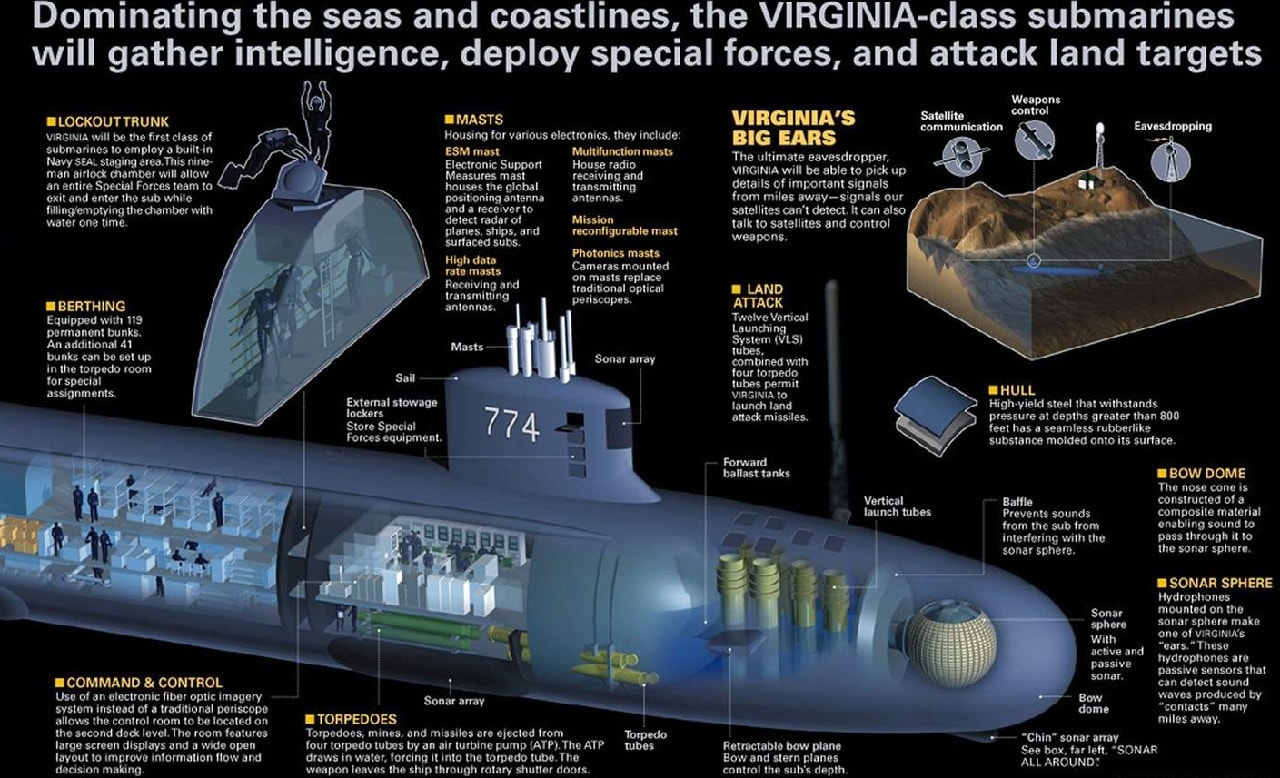The U.S. Navy on Saturday officially commissioned its newest fast-attack submarine, the USS Hyman G. Rickover (SSN-795).
It is the fourth Block IV Virginia-class submarine to enter service.
The boat was designed with enhanced stealth, sophisticated surveillance capabilities, and special warfare enhancements to meet the Navy’s multi-mission requirements. The USS Hyman G. Rickover will provide the capabilities required to maintain the nation’s undersea supremacy well into the 21st century, the Navy stated.
Secretary of the Navy Carlos Del Toro delivered the principal address at Naval Submarine Base New London in Groton, Connecticut. He commended the shipbuilders and crew, while he described the commissioning as a “true milestone for the fleet.”
“It is great to be here in Groton, known to many as the submarine capital of the world, as we celebrate the return of Rickover into service,” Del Toro said. “The crew of Hyman G. Rickover and our industry partners have worked tirelessly over the past several years to bring our nation’s newest submarine to life and we wouldn’t be here today without them.”
The Block IV Boats
Since entering service in 2004, Virginia-class subs have supported five of the Navy’s six maritime strategy core capabilities, including sea control, power projection, forward presence, maritime security, and deterrence. They do this by providing a combination of stealth, endurance, mobility, and firepower.
At present, Block IV could easily be considered the Navy’s best submarine, with a new Block V coming soon.
The SSNs have a fly-by-wire ship control system that also provides improved shallow-water ship handling. The subs were also designed to deploy special operator forces including Navy SEALs. A reconfigurable torpedo room can accommodate a large number of special operators and all their equipment for prolonged deployments and future off-board payloads.
The submarines displace 7,835 tons, with a hull length of 377 feet and a diameter of 34 feet, and they can attain speeds of 25 knots with the power from their nuclear reactors. Each of the Block IV boats can dive to more than 800 feet.
The Virginia-class Block IVs are replacing many of the older Los Angeles-class attack submarines.
The submarines feature Mark 48 advanced capability torpedoes and Tomahawk cruise missiles. The boats are equipped with the Virginia Payload Module, an 84-foot-long, mid-ship section that has four large-diameter, vertical launch tubes for keeping and launching Tomahawks and other payloads.
Honoring the Father of the Nuclear Navy
SSN-795 is the second nuclear-powered fast-attack submarine named to honor Adm. Hyman G. Rickover, known as the “father of the nuclear navy.” The first Hyman G. Rickover (SSN-709) was commissioned in Groton on July 21, 1984, and was decommissioned in December 2006. It was the only Los Angeles-class submarine not named after a U.S. city or town.
Adm. Rickover served in the Navy for 63 years on active duty. He recognized the military implications of successfully harnessing atomic power for submarine propulsion and forged an agreement with the Atomic Energy Commission.
In just seven years, the forward-thinking Rickover and his team obtained congressional support to develop an industrial base for a new technology. They pioneered new materials, designed, built, and operated a prototype, established a training program, and put to sea the first nuclear-powered submarine, the USS Nautilus (SSN 571), in 1955.
Author Experience and Expertise: A Senior Editor for 19FortyFive, Peter Suciu is a Michigan-based writer. He has contributed to more than four dozen magazines, newspapers, and websites with over 3,200 published pieces over a twenty-year career in journalism. He regularly writes about military hardware, firearms history, cybersecurity, politics, and international affairs. Peter is also a Contributing Writer for Forbes and Clearance Jobs. You can follow him on Twitter: @PeterSuciu.
From the Vault

